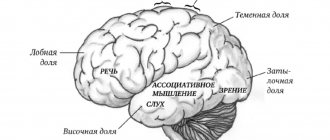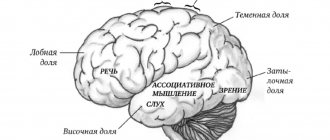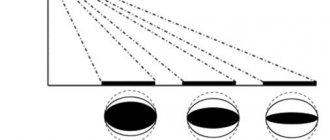The process of cognition of the external world is one of the areas studied by psychology. Modern science is in this matter the successor and successor of ancient philosophy, rooted in antiquity. Today, pundits in psychology have reached a consensus on the basic concepts that describe perception. This process is quite complex and has not yet been fully studied, but you can get a general idea of it for yourself by mastering several concepts. So, there are two stable terms to describe this function of the human brain: perception and sensation.
Sensation and perception: definitions of concepts
Modern Western psychology claims that human interaction with the world begins with sensations. The latter are simple reflections in the human consciousness of various phenomena of the external world, perceived by the five senses. Sensations do not convey the whole picture of the environment, but only those aspects of it that directly come into contact with a person. Next, the brain analyzes the information received from sensations and forms a final idea of external reality. Perception is this final result. Unlike the basic elements of cognition, it is a complex composite process that includes individual sensations as structural components.
Classification of sensations
Since sensations are generated by a specific physical stimulus, they are divided according to the level and modality of impact on various receptors:
- Organic - associated with organic needs: thirst and hunger, breathing, etc. Sensations of this kind, as a rule, have a relatively strong emotional intensity and are often unconscious. Thus, diseases are associated not only with pain, but also with an emotional state: heart problems with a lack of joy, love, fears; liver problems - with irritability and anger.
- Static - indications about the state of the body in space, active and passive movements, as well as movements of individual parts of the body relative to each other.
- Kinesthetic - caused by stimulation emanating from receptors located in joints and muscles. Kinesthesia is closely related to vision: hand-eye coordination plays an important role in movements carried out under the control of vision.
- Skin – pain, temperature, touch, pressure.
- Tactile - unlike touch, are active in nature, since there is a deliberate feeling of an object associated with an impact on it. With touch, knowledge of the world occurs in the process of movement.
- Olfactory and gustatory are of particular importance in the formation of an emotional environment that causes pleasant or unpleasant sensations in a person.
- Auditory - are dual in nature, in other words, a person perceives sound with both ears. Thus, people who are deaf in one ear find it difficult to determine the source and direction of sound.
- Visual - any color has an effect on a person, which is due not only to the physiological effect on the body, but also to the associations of the person himself. Some colors are capable of stimulating the nervous system, others are capable of inducing a trance, etc. For example, blue is usually associated with blue sky, orange with fire, etc.
An example of the difference between perception and sensation
To clearly demonstrate the difference between sensation and perception, let us imagine an individual eating an apple. It is clear that, firstly, he is holding the fruit with his hand, and his brain perceives this as a separate tactile sensation. Secondly, when biting an apple, this person clearly feels its taste - sweetness, sourness, etc. This also gives the brain information from the sensation. Thirdly, the visual perception of an apple is also only a separate sense provided by the eyes, one of the sense organs. Fourthly, when eating a fruit, a person feels its specific smell. Information about it is also transmitted to the brain as an independent sensation. Finally, fifthly, when biting an apple, a person hears a characteristic cracking sound, because at this time he receives auditory perception. Thus, when an individual comes into contact with a fruit, he has five completely independent sensations. But complex mental mechanisms synthesize all the information from them and provide consciousness with a single picture, a single idea of the apple, that is, a holistic picture of reality. It is a total, composite vision of the environment that represents the perception of the world.
But there is one subtlety when sensation can be identical to perception. For example, if a person does not eat an apple, does not inhale its aroma, but only holds it with his eyes closed. In this case, he receives only one sensation - tactile, and therefore the complete picture of the perceived reality will consist of only one sensation. At least until the person opens his eyes.
Perception disturbance
Adequate perception of a person is determined by the fact that, perceiving any object or phenomenon, he, as a rule, recognizes it as an isolated case from general practice. For this reason, perception depends on mental operations. The extent to which a person understands the world around him, the extent to which he perceives it, that is, through the prism of his worldview and acquired experience.
With various types of mental disorders, there is a disruption of the above-described processes of sensation and perception, and, accordingly, a distortion in the reflection of reality. Thus, there is a disorder of the “body schema”: the problem is awareness of the shape, position of one’s own body, its disintegration into parts, the feeling of extra limbs, and the like.
Violation of the integrity of sensations of different modalities can lead to an inadequate perception of reality, as, for example, the sounds of speech emanating from a person do not correlate with the person himself, but are perceived as two independent objects.
There are a number of different deviations in perception: illusions, hallucinations, agnosia and others, but all of them initially present the problem of accepting any feelings, emotions, unpleasant sensations, since it is on the basis of sensory data that a person identifies the meaning and significance of phenomena and events.
Mechanism of sensations
Perception is, as we have found out, a cumulative complex of sensations processed by the brain. What is necessary to make the primary feelings themselves possible? First, of course, you need the external object itself - the source of sensations. Secondly, a set of tools is needed that will help the subject come into contact with him and receive information from him. In Western psychology, such functional adaptations of the body are called analyzers. The author of the term is the famous Russian scientist, academician I. P. Pavlov. According to his theory, analyzers have a three-part structure, consisting of receptors, conductors and a center.
Receptors
Receptors are those nerve endings that come into direct contact with external objects and provide the perception of information through stimulation.
Accordingly, they are located in the sense organs - eyes, ears, tongue, nasal cavity, skin. Such receptors are called exteroceptors, that is, receptors directed outward, to the outside world. They are the basis for the primary sensations of the surrounding reality. But along with them, there is another group of receptors aimed at a person’s internal sensations - hunger, thirst, etc. These nerve endings are called interoreceptors.
↑ The concept of “cognition”.
Cognition is
the activity of people, the purpose of which is to obtain new reliable knowledge about the surrounding world, reality, man and society, based on its sensory and rational comprehension.
Epistemology
studies the theory of knowledge - this is a branch of philosophy that analyzes the nature and possibilities of knowledge, its boundaries and conditions of reliability.
In relation to the process of cognition, the following philosophical directions are distinguished:
Gnosticism
- a philosophical doctrine, the main idea of which is that cognitive activity for a person is a vital necessity (“Cognition is a necessity”).
Optimism -
a philosophical movement that considers the world to be entirely knowable (“The world is possible to know”).
Agnosticism
- a philosophical doctrine that states that the world is impossible to know. The rationale for this fact is as follows: a person can cognize an object only with the help of his sensations and internal experiences, but it is impossible to become the object itself and “see the world” from its side, which distorts the facts about what is being cognized. And such concepts as “god”, “soul”, “universe” are in principle unknowable, since they exist beyond the possible limits of the human mind. (“The world is impossible to know”).
Relativism
- a philosophical doctrine, the meaning of which is that all truths can only be relative, those. capable of changing depending on conditions (“Everything in the world is relative”).
Skepticism
- a direction in philosophy that questions the possibility of knowing reality (“Doubts regarding the possibility of knowledge”).
Center
The center of the analyzer is the brain. More precisely, its various sections that are responsible for the area of sensory organs entrusted to them. Some parts of the brain are responsible for visual perception, others for tactile perception, and so on. The center of the analyzer, receiving a signal from receptors through conductors, converts it into a specific sensation that a person feels.
These are the features of perception of the external world - in fact, we cannot directly experience taste or smell. Our brain only recreates and reconstructs sensations based on the data received from the receptors. And the whole panorama of diverse sensations exists only in a person’s head.
Visual sensations
There is no unanimous opinion among scientists about which of the senses, and therefore which sensation, is the most important, that is, carrying the largest amount of valuable information to the analytical center of the brain, which forms the final perception. In psychology, more precisely in its main trends, today the leading role is given to vision. It is believed that most of the information (up to 80%) that makes up perception is visual contact. Whether this is true or not, in any case, it is obvious that the visual function is a very important source of information about the external world. Her sense organs are a pair of eyes that physically perceive information from light vibrations. Correct functioning of the eyes allows us to perceive photon waves in the color spectrum, which subsequently allows the brain to generate all the many colors that color the world in our minds.
It should be noted that colors are chromatic, that is, those that form a color spectrum, observed, for example, in a rainbow. The opposite of them is achromatic. There are only three of them - black, white and gray.
Auditory sensations
Next to visual information, the ability to recognize sound plays a very important role in human life. The latter is an important way of communication and more. Sound waves that are perceived by auditory receptors are divided into two groups according to the nature of their sensation. The first includes noise sensations, that is, sounds that do not have a rhythmic structure in the vibrations of the sound wave. In contrast, rhythmically organized waves are called musical sensations.
Kinesthetic sensations
The life activities of most people involve significant mobility - walking, typing, dressing and many other daily activities that cannot be performed without using motor function. This explains the importance of clarity of motor sensations for life, because without them it would be extremely difficult to even bring a spoon to the mouth. These kinesthetic feelings, as mentioned above, are generated not by sensory organs, but by nerve endings distributed throughout the body.
Tactile sensations
Tactile sensations are also important for people’s communication with the outside world, and in addition, they provide a deeper perception of a person by a person. This is especially noticeable in a sexual context, but also in raising children and in other forms of relationships. Suffice it to recall, for example, the tradition of shaking hands. In other words, the sense of touch is of direct importance both for procreation (and therefore the preservation of the species) and for the development of society as a whole.
Some people, namely deaf-blind people, that is, deprived of the ability to see and hear, generally use tactile sensations as the only form of communication with other people.
In general, psychologists distinguish two types of tactile sense: tactile and temperature. The latter is responsible for recognizing heat and cold, and the former covers the rest of the complex of diverse sensations associated with touch.
Introduction
Sensory knowledge is the first available to a person, and it is this that forms a three-dimensional understanding of the world around us. This work will examine the issue of sensation and perception, the primary stages of human cognition.
The relevance of this issue cannot be overestimated, since everything we know about what surrounds us comes to us precisely through sensation and further perception. The important point here is that the world around us that we are aware of does not always correspond to the real world, which is caused by errors of perception and sensation. In order to understand the methodology for forming the image of an object and the world as a whole, one should turn to the basic concepts and properties of the objects considered here.
The purpose of the work is to consider the essence of the concepts of sensation and perception; to reveal it, the following tasks are set: establishing a classification of concepts, identifying their properties, establishing patterns of their manifestation, considering the basic principles of action.
One of the tasks of the work is a test aimed at consolidating the knowledge acquired during the work on the test, as well as checking how well the material has been learned.
Taste sensations
The human sense of taste is quite well developed, much stronger than the sense of smell. In addition to the tongue, the organs of perception of this sensation include the area of the soft palate.
The sense of taste consists of four components: bitterness, sweetness, acidity and saltiness. A certain part of the tongue is responsible for each of them, and the final combination of all four factors makes up the entire variety of flavors that are familiar to humans.
Synesthesia of sensations
The peculiarities of human perception are such that sometimes several basic sensations can be synthesized into one. In psychology, this phenomenon is referred to as “synesthesia.” Most often, such a relationship arises between the visual and sound senses. A person experiences synesthesia as a stable associative connection between shades and sounds. For example, some melodies may have their own characteristic color in the perception of such people.
Another variant of synesthesia, although more rare, is the synthesis of visual sensation with olfactory sensation. This kind of connection gives different color shades their own smell. A similar phenomenon develops in people whose work involves the sense of smell, for example, sommeliers or perfumers.
Synesthesia as a special way of perceiving the world
Synesthesia is a perceptual phenomenon in which an impression specific to one sense organ is combined with another additional sensation or image.
So, for example, phrases like: “salty joke”, “bitter reproach”, “stinging speech”, “sweet lie” and the like - acquire a very specific tangible meaning. The most common type of synesthesia is considered to be letter-color and number-color associations, when, for example, “6” evokes an image of a yellow tint or the letter “B” is perceived as purple.
The version of the origin of this phenomenon states that in infancy all people are synesthetes: certain neural connections initially maintain contact between the senses, and thus sounds and smells are intertwined in the mind, coloring, for example, the letters of the alphabet in different tones. For a certain group of people, this peculiarity of sensation and perception of the surrounding world persists throughout their lives.
Measuring sensations
In psychology, there is a special section whose field of study includes the study of the relationship between the strength of the stimulus and the brightness of the experienced sensation. This branch of science is called psychophysics. Its task is to build an adequate system for calculating sensation thresholds and develop a measurement scale corresponding to it.
Psychophysicists propose calling the threshold for the onset of a feeling, that is, the minimum impact of a stimulus below which the sensation disappears, the absolute lower threshold. Accordingly, the absolute upper threshold will be the degree of influence above which the sensation will also disappear.
Examples of such limits for human auditory perception are frequencies below 16 Hz (infrasound) and above 20 kHz (ultrasound).
Adaptation of sense organs
Prolonged contacts of stimuli and receptors are initiated by a process called adaptation of sensations. In other words, sensory organs that have adapted to regular exposure can reduce their sensitivity to the point of completely ignoring the impact. This adaptation is called negative. If, under the influence of prolonged contact with a stimulus, the intensity of sensations increases, the adaptation is called positive.
The most flexible adaptation in humans is observed to visual sensations, and the least flexible - to auditory sensations and to the experience of pain.
Characteristics of sensations
To better understand what is the foundation of perception as a mental phenomenon, it is necessary to turn to the nature of the sensations themselves, which are dependent on external stimuli and, reflecting their individual features, have a number of certain properties:
- One of the main characteristics is the quality threshold. For example, for visual sensations - color contrast, for auditory sensations - voice timbre, etc.
- The quantitative threshold, or intensity, is determined by the strength of the stimulus and the state of the receptor itself.
- Spatial localization - correlation with a specific part of the body that is exposed to the stimulus.
- Adaptation is the adaptation of the senses to the influencing stimulus. For example, adaptation to some smell that is constantly surrounding.
Formation of perception
The entire set of sensations described above forms perception. Memory plays an important role in this process, which allows a person to remember the experiences acquired in the process of interaction with the outside world. In this way, children's perception begins to develop - in the process of playing, manipulating objects, crawling and grabbing everything. The ability to store memory summarizes all received information in the form of experience and constantly enriches it throughout life. It, in turn, allows the brain and consciousness to form a holistic view of the outside world. It is important to note that perception is not just the sum of sensations collected into a bundle. This is a synthesis that allows, based on a number of senses, to perceive the world holistically, without dissecting it in the mind into various component parts.
Definition
Sensation is the primary stage of the sensorimotor response. And it is tightly connected with perception. Both phenomena act as intermediaries in the transmission of the environment, existing independently of consciousness, based on the impact on the senses: this unites them.
But in psychology, perception is not just a sensory image of an object or phenomenon, but also its awareness. It characterizes a diverse range of relationships that result in meaningful situations. Thus, perception can be safely called a form of knowledge of reality.
Types and types of perception
In human psychology, experts distinguish several types and types of perception. Currently, this is a more or less established and universal system, accepted everywhere. As elsewhere, the development of perception goes from simple to complex. The simplest type is based on one of the sensations. This could be listening to music or inhaling the scent of a flower. In these examples, perception is built by one analyzer based on one stimulus. If several sensations are included in the process of reflection, as, for example, when watching a movie or when making a bouquet, then perception is of a complex type.
In addition, perception in psychology is divided into several types. This classification is based on distinguishing the types of perceived objects themselves. Thus, experts distinguish into separate types the perception of time, the perception of space, the perception of movement, and even the perception of a person by a person. The latter is scientifically called social perception.
The perception of time is based on changes in the internal processes of the human psyche, and therefore is largely subjective.
The perception of space gives an idea of the shape, size and location of objects in three-dimensional reality. The movement of objects along the coordinate axis forms the perception of movement. The latter can be relative or non-relative. Relative perceives the movement of an object depending on other objects. The non-relative, on the contrary, perceives the object in isolation from outsiders.
Characteristics of sensory cognition
In the past, Soviet philosophers considered sensory knowledge to be the lowest level of human thinking. And all because a person in the process of this type of cognition is guided only by instincts.
But modern philosophers have a completely different point of view: rational and sensory touch are one whole.
Without instinctive cognition of this world there would be no conceptual-abstract thinking, therefore the presence of these two ways of thinking is necessary for the normal existence of a person.
In the process of sensory cognition, every living being (not only humans) uses its inherent organs of vision, hearing, smell, and taste.
For example, as children we did not know that lemon tastes sour. But after trying, we discovered it with the help of the taste buds of the oral cavity. And based on personal experience, we can say that lemon is sour.
Objectivity and constancy of perception
Objectivity and constancy are properties of perception distinguished by modern psychologists.
Objectivity is the concreteness of an object, that is, its presence and objective presence in space and time. In contrast, psychologists distinguish purely speculative, abstract concepts and categories, which are not products of the reflective process and the object of perception, but the fruit of thinking or imagination. Therefore, only phenomena that have the characteristic of objectivity can be perceived. This is called the objective principle.
Perception in psychology is also endowed with the property of constancy, that is, the ability of consciousness to preserve its essential characteristics of an object, regardless of the distance to the person. That is, the same object, for example, a large balloon, moving away from a person, will still be interpreted by consciousness as a large balloon. This property of the psyche makes it possible to distinguish perspective and adequately navigate in space.
Rational and emotional, sensory perception. Comparison. Pro.
It is almost impossible to completely separate these two elements, because in the psyche they usually work together.
However, people differ in that some use predominantly rational thinking, while others use emotional, sensual thinking.
Here we will look at how these two types of thinking affect our lives.
1. Rational - here we include all elements of the psyche that operate with logical information. Thoughts, ideas, conclusions, judgments. Implies logical or rational thinking.
Rational thinking is based on the logic of things. Rational - it is timeless, describes objects (physical and spiritual), uses them for thinking, but does not possess these “object-images”, because they are not saturated with an energy component or emotions.
Logical thinking can solve any problems in the future or past. It always thinks about another time, not about the present, because, from the point of view of logic, there is no point in thinking about the present moment. Emotions do not need this; emotion is always concentrated in the “here and now.” Rationality, in turn, seems to pull us out of the present moment. And if a person prefers “rationality” to emotions, then he is rarely in the present and cannot feel the reality of life. And emotion is a way of returning to one really existing time - the present.
Logical information always skims the surface of reality and cannot penetrate to the essence of things. It is feelings that reflect the truth of things and phenomena. Because feelings are a more serious and profound tool for understanding, awareness and orientation in this reality. The more sensually developed a person is, the better he understands reality. But certain, not “garbage”, feelings of a high hierarchical level (presence in the present, measure, balance, fullness of life, mysticism of life, infinity, etc.) also matter.
If the algorithms of logic, when we experience sadness, delay or intensify it, then our sadness will remain, turn into depression or intensify to melancholy. If the same algorithms reduce it, it will decrease. But, if you don’t involve rational thinking in the emotional process at all, then the emotion will go away completely through its expression.
The more rational thinking is devoid of feelings, the more freedom of thought it has. It can go in any direction, both for us and against us. Formal logic doesn’t care which direction it works. It does not take into account our uniqueness and individuality. Only certain laws of logic and clarity of the thought process are important to her. Only when we connect feelings to thinking, then a system of thinking appears regarding our model of the world, our individuality, subjectivity. Intuitive feelings help us correctly process information regarding us, our capabilities, and the capabilities of the environment. And logic is like a program that, depending on its purpose, will either help, destroy, or remain neutral. For example, algorithms of neurotic perception will worsen the quality of life. And perception algorithms relating to harmony improve it.
Rational thinking has much greater plasticity than emotions and feelings. This property is based on the independence of logic from our model of the world, subjective perception, and is limited only by the capabilities of our thinking, memory, and knowledge about nature. The same fact can be interpreted both for good and for bad, both in one’s defense and in one’s accusation. Logic is freer in its movement than feelings. There are certain advantages to this: the opportunity to look objectively, from the outside, without being limited by the framework of your perception and creative thinking. However, there are also disadvantages: you can easily wander away from the main direction of thinking, get confused, get stuck on something, and harm yourself due to the lack of a system of relativity of our Self.
Rational thinking is like a mercenary; it doesn’t care who it works for. Whoever gives him more feelings, it works for him. For example, if we are charged with anxiety, then the rational will diligently look for more and more new images of anxiety that do not even really exist, plunging us into an anxious world. If we replace anxiety with anger, then logic will work on anger and prove to us that we need to destroy all images of anxiety, and that they are actually not scary at all, etc.
"Ratio" always works for a specific goal, and not for quality. Whatever you order, it will give you. It follows a narrow path, unlike feelings. Ratio cannot capture a large amount of information at once. When you achieve the results of thinking, you become convinced that you are right due to the presence of logical evidence of the conclusion made. It’s like a trap of logic that does not take into account our internal subjective reality, the sensory part of our personality.
One of the properties of rationality is the fear of loss, the unknown, uncertainty, incompleteness, and lack of control. These types of fears are more common among rational people than among intuitive people, because... in the world of “rationality” everything should be clear, understandable, logical, and controlled.
Practice: If you let go of your mind, you can see the depth of what is happening now and what will happen next.
To fight the rational component means to try to pay attention to the factors of the sensory sphere and emotions, to inhibit abstract thinking due to its inferiority.
2. Emotions and feelings are the elements that emotional thinking and/or intuition operate with.
We define ourselves as reasonable people, but in reality this is not entirely true. Emotions and feelings, invisible to our consciousness, strongly interfere with the processes of perception and behavior. They distort perception depending on the emotion we are experiencing at the moment.
Emotions and feelings are based on informal and subjective logic. They belong to the present more than to the future or the past. Feelings allow us to become a full-fledged owner of the object, the image about which they arise.
In other words, if an object is not saturated with feelings inside my psyche, then it has no meaning for me. The more an image or object in the psyche is saturated with emotions and feelings, the more meaning it has for me. For example, if a person’s correct values and behavior algorithms are not supported by appropriate emotions and feelings, then they will never be realized. A person can talk about them, teach others, but he will not be able to fulfill them in his life. Only emotions and feelings play a complex motivational role in the psyche.
Some emotions, such as anxiety, take us into the future and force us to think about the future; emotions of resentment, sadness, shame, guilt, contempt make us think about the past. But their meaning is to shape our attitude and behavior in the present towards the future or the past.
Interaction of logic and feelings.
All the main conflicts of people lie in the incorrect functioning of feelings and logic. A separate logic, even if it is contradictory, will not create a significant conflict in the psyche if it is devoid of emotional and sensory content.
Suffering, like joy, is a matter of feelings and emotions. We cannot experience any thoughts from any thoughts until emotions are connected to them. Therefore, thoughts themselves are like inanimate material in the psyche, devoid of vital energy, without emotions and feelings.
The joint work of logic and emotions can be clearly seen in the example of one of the mechanisms of psychological defenses - rationalization. A person himself does not understand how he automatically modifies the facts in the direction he needs, justifying himself, using formal logic, but taking into account his own subjective interests at the moment. For example, making excuses to others because of feelings of guilt, avoiding responsibility, and showing selfishness. Rationalization is the basis of double standards, when we believe that we can break a certain set of rules, but others cannot.
There is no unique recipe for what kind of person you need to be - sensual or rational. Both of these types of perception of reality are necessary for a person to live a full life and to perceive it more objectively. Each situation requires its own approach. Therefore, the proportions of feeling and logic may vary depending on the specific situation. You cannot rely only on intuition, as it can be wrong, especially if you have not specifically engaged in the development of sensory thinking.
The best solution is one that takes into account both the rational and the emotional together, but in addition also takes into account the real state of affairs.









